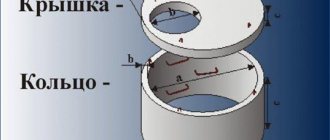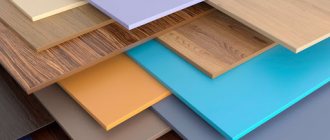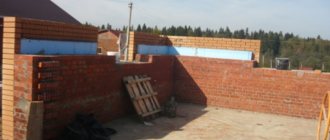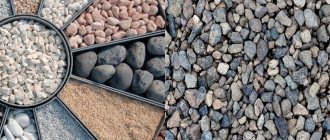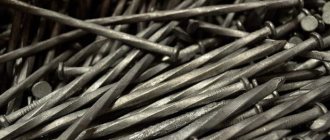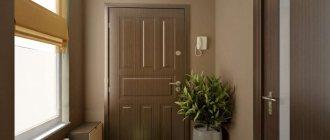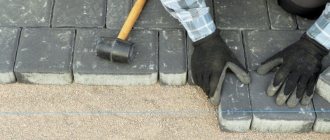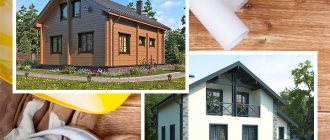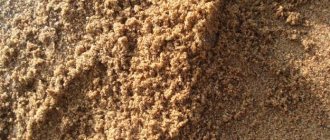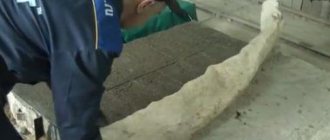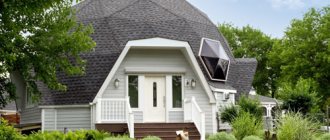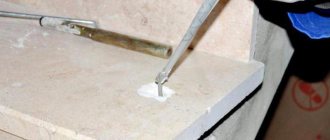Production
It is produced by the spunbond method from a polymer melt (usually polypropylene powder or granules) without the help of weaving machines.
- Streams of liquid polypropylene pass through a spinneret spinning machine, at the exit (from thin holes - spinnerets) from which threads or fibers are obtained. They are immediately placed on a conveyor to form a web.
- The fabric can be formed in different ways - by needle piercing, chemical impregnation or thermal bonding (hot air) on a machine with two rotating shafts through which the fiber is passed.
- Next, the material is impregnated with special compounds (optional).
- Available in different densities and thicknesses (the higher the density, the thicker), in rolls of different widths.
- It can be produced in various colors (dyes are added to the polymer melt), and the design can also be applied to the finished canvas.
Manufacturing methods, standards and GOSTs
Spunbond belongs to geotextiles , since the raw materials for its production are fiber-forming polymers, among which the most used is polypropylene, and among the manufacturing methods - spunbond.
Dies are special forms of high strength for pressing various plastic substances. The use of dies for polymer melts makes it possible to obtain thin continuous threads that form a textile fabric.
These threads are held together by needle piercing or thermal bonding on a calender - a special machine that allows you to continuously form a sheet of polymer, passing it between the shafts as they rotate.
From the gap between them, their length, diameter, the canvas acquires the required thickness and width. Many people know such machines from laundries. They provide ironing while simultaneously drying things.
Bonding of threads can be done using a water jet method, hot air, or chemical impregnation of the threads. The characteristics of the raw material and its scope of application depend on the method of fastening the threads .
The spunbond manufacturing technology includes two mandatory stages - molding and subsequent bonding of the fabric fibers . But there is a third stage, consisting of additional finishing of the canvases - dyeing, impregnation with special compounds, etc.
The material is well painted. And the introduction of light-stabilizing mixtures and dyes in the form of superconcentrates into the coloring process adds light resistance to spunbond. Ultraviolet protection against fading and destruction is provided by an additive designed specifically for this purpose.
In the production of spunbond as geotextiles, they are guided by the standards of the Russian Federation, the main of which is GOST R 53225-2008 “Geotextile Materials”. This standard clearly defines the terms geotextile material and non-woven geotextile.
If it is necessary to establish the thickness, surface density and water permeability of such materials, use the corresponding standards for them:
- GOST 50276-92 (ISO 9863-90) “Method for determining thickness at certain pressures”;
- GOST R 50277-92 (ISO 9864-90) “Method for determining surface density”;
- GOST R 52608-2006 “Methods for determining water permeability.”
Properties and types of Spunbond
The properties and scope of application of spunbond largely depend on such an indicator as density.
Depending on the type of fiber bonding, the material can be of varying thickness and density - from 15 to 600 g/m2. Denser types (over 150 g/m2) are usually needle-punched; the density of thermally bonded fabric, as a rule, does not exceed 150 g/m2.
in the photo there is a white spandex
The main characteristics of spunbond are:
- environmentally friendly and non-toxic. Consists of 100% synthetic fibers, bonded without the use of glue, does not emit hazardous substances even when exposed to high temperatures;
- ease. Even the densest types have little weight;
- strength and wear resistance. Does not rot or mold, does not corrode;
- maintains strength both in dry and wet conditions;
- permeability. Permits air and steam, does not create a greenhouse effect;
- low electrical conductivity. The material does not conduct electric current and does not accumulate static electricity;
- ability to retain heat. It is an excellent heat insulator;
- homogeneity of structure;
- resistance to acids and alkalis;
- inertness towards chemicals. Does not react with them;
- resistance to high and low temperatures and their changes. Does not change physical properties at - 55 °C and, with additional processing, has heat resistance up to 130 °C;
- low degree of flammability and flammability;
- availability. It is inexpensive and produced in large quantities;
- ease of use. The material is easy to cut and process, the edge does not crumble.
The use of additional processing makes it possible to obtain materials with new properties:
- agrotextiles or agrofibre. It contains ultraviolet stabilizers that neutralize the effects of rays (designated as SUF spunbond). It does not decompose when exposed to the sun;
- multi-colored spunbond. It contains dyes, with the help of which the fabric can be produced in various colors for decorative and other purposes;
- laminated. On a polypropylene base that does not allow moisture and air to pass through.
Performance characteristics
One of the main characteristics for nonwoven materials is their density . Thanks to various technological approaches, the density of spunbond can vary from 15 to 600 g/km.m.
Needle-punched spunbond has high surface densities (above 150 g/sq.m.) . This determined its use as a base in flooring and roofing.
Thermally bonded spunbond is the lightest of all types of material in terms of density , since it is less than 150 g/sq.m. That is why it is most widely used for various purposes in diverse areas of human activity.
Thermally bonded snunbond is also used as a geotextile. For these purposes, the density can vary in the range from 15 to 150 g/sq.m.
In addition to the density indicator, the following is taken into account:
- elasticity and endurance, i.e. how durable it is under all loads and how quickly it returns to its original shape;
- breaking load;
- heat resistance and frost resistance (heat resistance);
- electrical conductivity.
It should be said that spunbond fabric has low electrical conductivity and excellent properties relative to the listed specified requirements. Geometric properties characterize the dimensions of the raw material, which is important for breathability, rigidity, thermal insulation, etc. The advantages include a light cut, regardless of size.
From the point of view of hygienic properties, spunbond does not react in the air and wastewater with toxic-harmful substances , is not affected by mold and does not rot, and therefore is environmentally friendly.
Read about the properties and performance characteristics of microfiber material in this publication.
We will tell you about the advantages and disadvantages of twill fabric, as well as how to use it, in a detailed review.
To find out how to properly care for twill fabric, take a look here.
Spunbond application
All the unique properties of this material allow it to be used in many areas - from construction to medicine.
Agriculture
Spunbond is the most popular covering material; it is produced under different brands - Lutrasil, Agrotex, Agrolux, etc.
They may differ in density and color, and types of additional processing. Is used for:
- protecting plants from frost, precipitation, weeds;
- promotes faster soil warming and sprouting;
- also allows you to increase the time between waterings.
In gardening and vegetable gardening, thermally bonded spunbond with a density of 15 to 80 g/m2 is usually used.
On a note
Agrofibre with SUF can be white or black. Black spunbond non-woven material is used for mulching - covering the soil to regulate temperature and humidity, and getting rid of weeds. White - for protection from frost and heat.
Advantages of spunbond as a covering material for greenhouses, greenhouses and beds:
- Light weight does not in any way interfere with the growth of even the thinnest and weakest shoots.
- Air and light permeability (indicator depends on density) or impermeability. Depending on the needs, various materials are used.
- Allows you to create a special microclimate, protect the soil from drying out and increase the periods between watering.
- Thermal insulation properties allow you to extend the growing season and protect against frost.
- Protects against insect pests.
- Doesn't rot.
- Does not react with pesticides and other chemicals.
- Does not emit toxins and does not harm the future harvest.
- It allows water to pass through and does not allow precipitation to accumulate on the surface and put pressure on plants (unlike polyethylene).
- Protects the soil from erosion (blown away by the wind).
- Softness and plasticity make it possible to cover frames (greenhouses) of various shapes and designs with this material.
Special types of spunbond are produced for the agricultural sector:
- foil black and white (to reflect light);
- two-color - black and white, red and white (to accumulate heat), black and yellow (to repel insects).
Construction
In the construction of houses, spunbond is used as an insulating layer - on its basis, vapor-permeable moisture and windproof or vapor barrier membranes (from dense materials) are made. An intermediate layer between the wall surface and the finish is made from a thin and less dense material to prevent cracking.
In road construction (and in landscape design) it is used as a cushioning layer for drainage.
Read about: Hollophan insulation
Medicine and workwear
The low cost of spunbond allows it to be used for the production of disposable products, for example, gowns, shoe covers, headgear (caps), masks, disposable kits for surgical operating departments. This material can be sterilized (radiation, steam, autoclaving), repels water and dirt, and allows air to pass through well, creating comfortable working conditions. Products made from a special laminated two-layer spunbond have blood-repellent properties.
Spunbond fabric is indispensable for sewing workwear for the service sector and catering. It is used to make aprons, trousers, and robes for beauty salons, canteens, and restaurants.
In ordinary clothing, it plays the role of a cushioning material, making clothing parts more rigid and allowing them to retain their shape without stretching.
Used as a lining material in the manufacture of leather bags, purses, purses and sports bags.
Production of hygiene products
The hypoallergenicity, softness and good permeability of spunbond make it indispensable in the production of feminine and children's hygiene products (pads and diapers) as a top layer.
Spunbond for furniture
Lightweight and inexpensive material is used as a separator between upholstery and filler, as a cushioning material over a spring block. They also cover the back walls and bottom of furniture.
Promotional Products
Various souvenir bags, cases, and cases are also made from this material.
They are more durable and environmentally friendly compared to polyethylene, and also look more presentable. Available in various densities and colors, a pattern or company logo can be applied.
Filters
Various filters are made from spunbond - for chemicals, air filters for cars, for respiratory protection (respirators), for vacuum cleaners.
Spunbond packaging and storage systems
It is used to make packaging, cases and organizers for storing clothes, linen and various household items, which protect products from dust and are well ventilated.
Nowadays, whole sets of beautiful colors are being produced that will help organize order in the house and give the interior a stylish and cozy look - these are covers for dresses and men's suits, shoes, bedding and cosmetics, made in the same color scheme.
How much does spunbond cost? Brief overview of prices per meter
Density, size and brand play a role in spunbond pricing.
| Name | Options | Average price as of April 2021, rub. |
| Agrotex | 2.1×10 m; 30 g/m² | 202 |
| Agrospan white | 42 µm; 3.2×10 m | 259 |
| Agrotex 60 black | 1.6×10 m; step 30 cm; hole diameter 8 cm | 574 |
| Luck 40 | 3.2×10 m; 40 g/m² | 349 |
In this case, it is important not to calculate the price per meter, but to immediately consider the material in the required quantity per meter.
Verdict: agrofibre is a very useful invention
Wherever you use this material, in a spunbond greenhouse, on soil covered with much-needed agrofibre, in construction, the purchase will pay off and be fully justified!
Product care
Reusable spunbond products (for example, covers and organizers for linen and clothing) cannot be machine washed.
- It is advisable to dry clean - wipe with a cloth or vacuum.
- They can be washed by hand, carefully, without using powder or other detergents.
- Do not iron, as the material will stick to the iron.
- To straighten such a product, you can treat it with steam or simply hang it.
Disposable products do not require maintenance; after use, they are simply thrown away.
An inexpensive material with unique properties has won the trust of many manufacturers and is used in almost every area of human life.
Spunbond - what is it, application in gardening, which side to cover:
© 2021 textiletrend.ru
Recommendations for selection and use
The choice of material directly depends on the purpose of use.
In order for the canvas to last a long time, it is necessary to take into account a considerable number of factors when choosing.
- Density - the denser the material, the worse it allows moisture and air to pass through. If agrofibre is purchased for mulching or preserving heat in the soil, choose spunbond that is quite dense - 60 g/m². To prevent sunburn and protect against birds, choose a thin fabric with a density of 12–30 g/m² so that the fabric does not crush the sprouts.
- Additional modifications - lamination, spot coating - change the properties of the material. This needs to be taken into account. Reinforced fiber is completely unsuitable for protecting plants from the sun, and material with PVC spot coating is not suitable for a drainage system.
- You need to choose quality material . The only indicator can be the manufacturer’s warranty and its reputation. The only visible sign of quality is the homogeneity of the material. If there are gaps or compacted areas in the canvas, it is a counterfeit.
- Spunbond is produced with and without UV protection . The first option is used for gardening and façade windproofing. Unprotected material is used inside the building.
Thin spunbond cannot be washed.
Some spunbond products require care , especially for clothing covers, bags and clothing with lining. The rules are simple:
- Items made from spunbond cannot be washed ; thin fabric cannot bear such a load. Hand wash allowed, very gentle and without powder or soap.
- Preference is given to dry cleaning : it is better to vacuum the product or wipe with a dry sponge.
- Do not iron the material. Clothes with such a lining are ironed only on the outside or use a steam generator.
Disposable products are thrown away after use.
Manufacturers of spunbond in Russia
60 enterprises are engaged in the production of nonwoven materials in the Russian Federation. Of these, 23 companies specialize in the production of spunbond:
| Region | Company | Address |
| Central Federal District | Hexa-Nonwovens | Moscow Region, Krasnogorsk |
| Ivanovo Polymer Company | Ivanovo region | |
| Kbk-Torg | Moscow region, Podolsk | |
| Netkanika | Moscow | |
| March | Ivanovo | |
| Spunlab | Ivanovo | |
| Ohk Shchekinazot | Tula region | |
| Snabtorg | Ivanovo | |
| Td Van-market | Moscow region, Podolsk | |
| Kotovsky Nonwoven Materials Plant | Kotovsk | |
| Stroy-Agroaccess | Moscow Region, Mytishchi | |
| Northwestern Federal District | Akira | St. Petersburg |
| Southern Federal District | Khozagro | Taganrog |
| Gk Geomaterials | Novocherkassk | |
| Agrosetka-South | Rostov region | |
| Volga Federal District | Volga-Medical | N. Novgorod |
| Dorpier | N. Novgorod | |
| Polymatiz | Republic of Tatarstan | |
| Plant Elastic | Nizhnekamsk Republic of Tatarstan | |
| Geoplast | N. Novgorod | |
| North Caucasus Federal District | Lavtex | Pyatigorsk |
| Ural federal district | Nkg-Engineering | Yekaterinburg city |
| Td Sintecom | Yekaterinburg city |
A little about making spunbond
In the 21st century, scientists gave rise to new technology in the field of polymers. The melt of the synthetic substance passes through special filters in the form of threads. They form the web on the conveyor. Afterwards, the material is processed so that it acquires a marketable appearance and is wrapped in rolls.
The spunbond manufacturing method makes it possible to obtain a dense non-woven material with amazing properties:
- low creasing;
- frost resistance;
- durability;
- heat resistance;
- strength.
In addition to using the fabric for making disposable clothing in medicine, farmers saw great potential for use in spunbond.
Enterprises produce fabric with different characteristics. For use in agriculture, a density from 17 to 60-80 g/m2 is suitable. This covering material is good for use in open and protected ground.
How to secure spunbond to a garden bed. How to plant under spunbond?
First of all, we dug up the bed. You need to choose a place for a garden bed with fertile soil.
Next, you need to lay the non-woven material you have chosen. What brand it will be is not so important (spunbond, lutrasil, agrospan), the main thing is that it should be quite dense, less than 50-60 g/m2. You should not plant strawberries under black film. The film is less durable, cracks faster, also does not allow moisture to pass through and does not allow the soil to breathe.
For planting under the black material, I allocated a small area of 150 cm x 150 cm. When measuring the material, you need to take a reserve of about 20 cm on each side. These 20 cm will be used to fix the material to the ground. Some fix it by digging in with earth, some with iron pins, others, like me, with stones. Land is a very valuable resource for me, and I allocated a small area for this type of planting, so I used cobblestones.
When the material is attached to the ground, you need to make markings on it in order to make cuts in the right places in the future. I made cuts in the material crosswise, not very large, so that weeds would not sprout. It is advisable to leave 50-60 cm between the rows so that it is comfortable to walk; in my case, the planting pattern is 30 x 40 cm, since I have a small bed and a small plot.
We make cuts in the material using a stationery knife.
Before planting, I added store-bought universal flower soil to each hole. I also watered each hole with Agricola solution. I diluted 25 grams of the substance into 10 liters of water. I also added purchased universal soil for flowers into each hole.
- In advance, I watered the seedlings overnight with a weak solution of “Fitosporin”, diluted 1 tsp per 10 liters of water.
- I planted 16 strawberry bushes, 3 different varieties. Varieties: "Merchant's Wife", "Ostara", "Queen Elizabeth 2". “Kupchikha” planted adult plants, “Ostara” - seedlings, “Queen Elizabeth 2” divided the bush, so the seedlings turned out to be a little frail, but later they began to grow.
- In order not to get confused about the varieties in the future, I made signs with the names of the varieties and laminated them with tape.
- I planted strawberries so that all the bushes were at soil level. If planted too deeply, they will begin to rot; if planted not deeply, they will begin to dry out. Also make sure that the soil does not get into the outlet, otherwise the seedling will grow worse.
- I tried to choose not hot weather, but the weather forecast let me down, so I installed arcs and stretched white non-woven material to create shading; without shading, the seedlings will die if the weather is hot.
- The next day, when the sun set, I sprayed the bushes with a weak solution of Epin, dilution instructions are indicated on the package.
Attention! Do not use black film mulch in hot regions; it overheats and does not allow moisture to pass through.
What covering material is best for gardening and vegetable gardens?
It all depends on the specific goal. It is more profitable to use film for greenhouses, as it allows heat to pass through. But it will have to be removed for watering and airing the soil. And you can cover seedlings with spanboard without fear that rain will cause the material to sag and break the plants underneath.
Spunbonds are effective in preserving garden crops from frost and precipitation.
However, frame buildings made from spunboards will be expensive, since high-density material will be required. Smart gardeners use both of these materials. In early spring - film, and in the warm season - spanboard or similar products.
An alternative to commonly known materials
Agrofabric as a covering material for gardening has become widespread due to the protection of beds from weeds, ease of use for mulching the soil, and durability.
But its main task is to preserve moisture, provide air access, and prevent the soil from drying out. It is also suitable for greenhouses, but only as a surface ground material.
What to choose to create shadow
Sheltering garden crops from direct ultraviolet rays in the hot summer is a guarantee of harvest. And this is important mainly for berry crops. But vegetables can also suffer if there is too much sun, since most cultivated species grow primarily in partial shade. To create such a shadow, nets made from polypropylene films with ultraviolet stabilizers are used. They can be placed directly on the ground or built as a canopy.
A canopy with a mesh that creates shade on the garden bed.
Thus, covering material for the garden and vegetable garden can be different. It must be selected based on the parameters of feasibility and benefit in combination with cost, durability and labor intensity during operation.
Once again about polyethylene.
But the material closest to amateur gardeners for many decades has been plastic film. Its strength and wear resistance also depend on density, but there are other parameters that you need to pay attention to when choosing:
Reinforced polyethylene film
The simplest type of film is the one used for growing crops mechanically. It can be black or black and white three-layer material, which must be permanently removed for watering and airing the soil. The thickness indicators are almost identical - 6-7 mm. Strawberries and cucumbers require special bedding. It can be either very thin or more massive.
Choosing covering material for the garden
Special covering material for the garden and vegetable garden is used when planting new plants to help young shoots rise and strengthen. It comes in two types: natural (for example, fallen leaves) and artificial. The first is more environmentally friendly, but can be infected with fungal diseases; insect larvae overwinter in it. Therefore, artificial varieties have become increasingly popular. Let's take a closer look at their features and scope.
Cover with white spunbond to protect against birds
In our area there are a huge number of birds who love to feast on everything that ripens in the garden. And even those that have just been planted in the beds in the form of seeds. No stuffed animals scare modern birds. For the sake of order and beauty, of course, I put up a stuffed animal, but I don’t count on the effect of its presence.
I’m not against birds, and I listen to their chirping with pleasure, but I’m not ready to give them the harvest I grew with love and a lot of work. So I successfully use white spunbond in a competition with birds “who can assemble it the fastest.”
Protecting strawberries from birds
What did I do to save strawberries from forty. By the way, they are real beauties here - the size of a chicken, with bright white-blue-black plumage and the manners of indisputable mistresses of the position.
She hung metal cans, which rattled in any breeze and haunted all the inhabitants of the dacha, except for the white-sided magpies. She pulled on the rustling ribbon and laid out the shiny discs. Allegedly, magpies are afraid of glare and rustling. Nothing like this. As soon as the strawberry harvest ripened, I found pecked berries in the garden. What a shame, the ripest and sweetest. The magpies inevitably outpaced me in their attempts to harvest the ripe goodies.
Now, as soon as the first berries appear, I completely cover the strawberry plantation with the thinnest white spunbond. I attach it directly to the ground without pulling at all. Strawberries are quietly ripening under cover, and the birds are just licking their lips. Now the entire harvest goes to me for my labors and joy. Removing the cover or opening it temporarily for harvesting is not a problem, because it is very easy to attach.
The photo shows the very principle of shelter, but the time has not yet come, the berries are not ripe. Perhaps in a couple of weeks I will add a photo with a ripe and covered harvest.
Protection of currants and cherries from birds
Birds love currants and cherries. Blackbirds and sparrows exercise more here. I observed a picture when the bush was not visible because of a flock of sparrows pecking at ripe red currants.
Last year, the first berries were produced by a young varietal cherry. There were only a few of them, but even the unripe berries seemed large and promising. I really wanted to try a new variety and evaluate the expensive purchase. But it was not there. The blackbirds were the first to appreciate the taste of cherries, and all I could do was see a couple of pecked berries lying under the tree. I never tried it.
This year I hope to avoid this. On currants I have already tried the technology of wrapping the bush with thin white spunbond. I’ll soon wrap the cherry as well, as soon as the berries ripen. While she is small, this is quite possible. I know that there are special nets to protect berry bushes. Of course, they are convenient to use, especially on fairly large plants. But, believe me, white thin spunbond is no worse. Yes and much cheaper.
Protection of peas, beans, corn from birds
My favorite birds don’t disdain seeds either. Rooks and starlings work here in the spring. It is known that the depth of placement of pea, bean and corn seeds into the soil is small. So they become prey and a delicacy for birds, which in some incredible way choose the beds with these crops.
I have encountered the problem of pecked seeds more than once. At first I didn’t understand where the sown seeds disappeared, the shoots of which were never seen.
And now, immediately after sowing, I cover the beds with thin white spunbond. I attach it loosely to the ground, leaving free space for seedlings to grow. I remove the shelter only when the plants reach a height of 4–5 cm. Now the birds are no longer interested in them.
By the way, the corn is waiting for another wrap in white spunbond. There may be nothing left of the cobs that ripen in the fall in the battle for the harvest between magpies and jackdaws. Therefore, I try to plant corn in such a way that it is convenient to completely cover it with spunbond. Usually this is a square bed, which I simply wrap with covering material around the perimeter, protecting the cobs until they are fully ripe.
